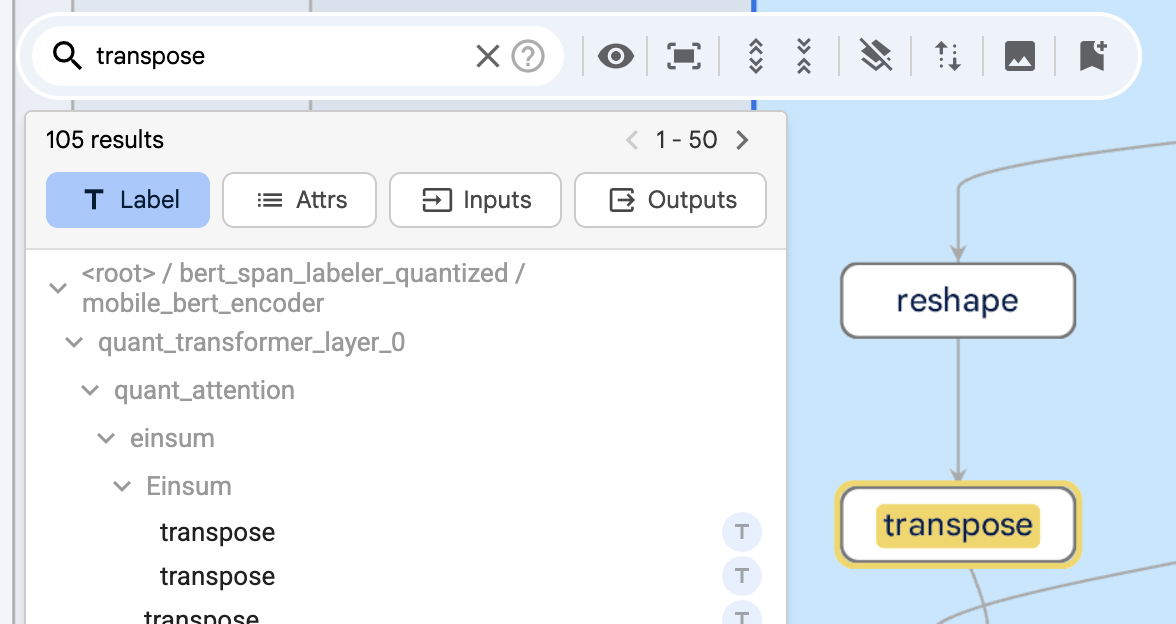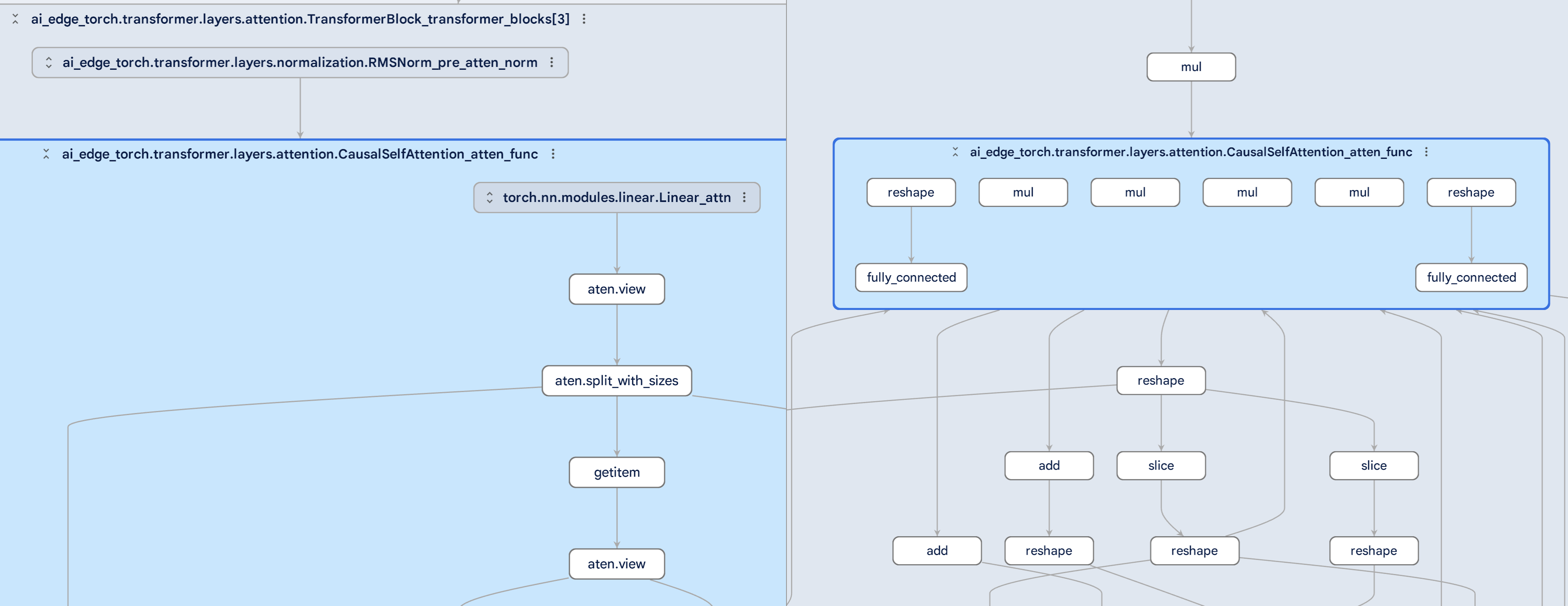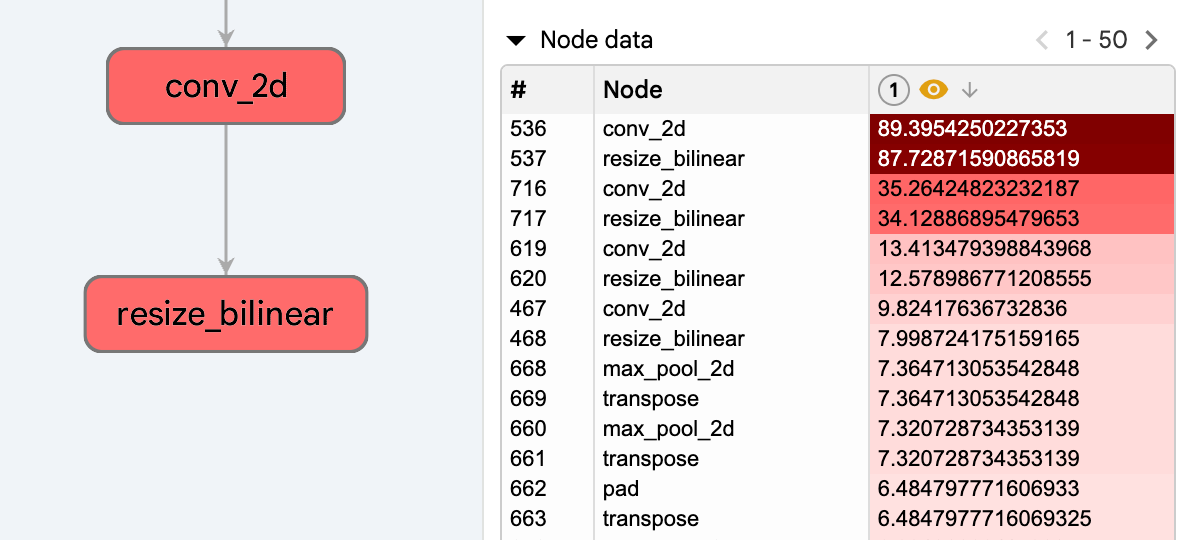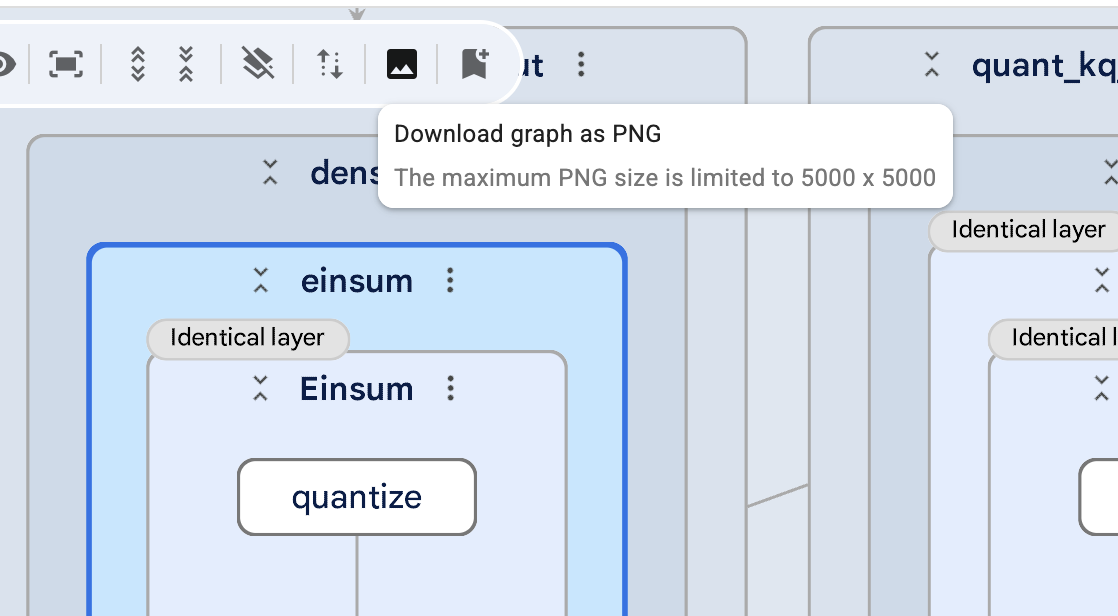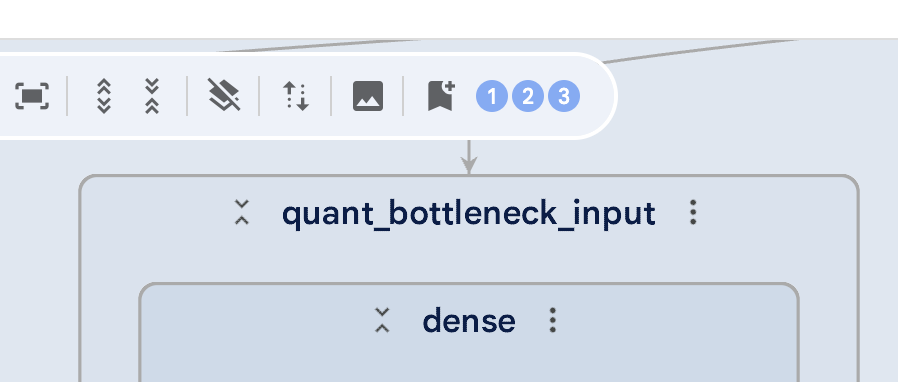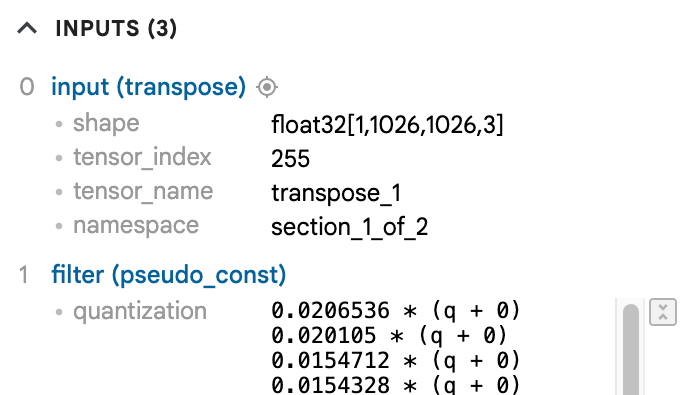כלי להצגה חזותית שמאפשר לנתח מודלים ותרשימים של למידת מכונה, ומאיץ את הפריסה ליעדים במכשיר.
תחילת העבודה ניסיון ב-Colab מידע נוסף
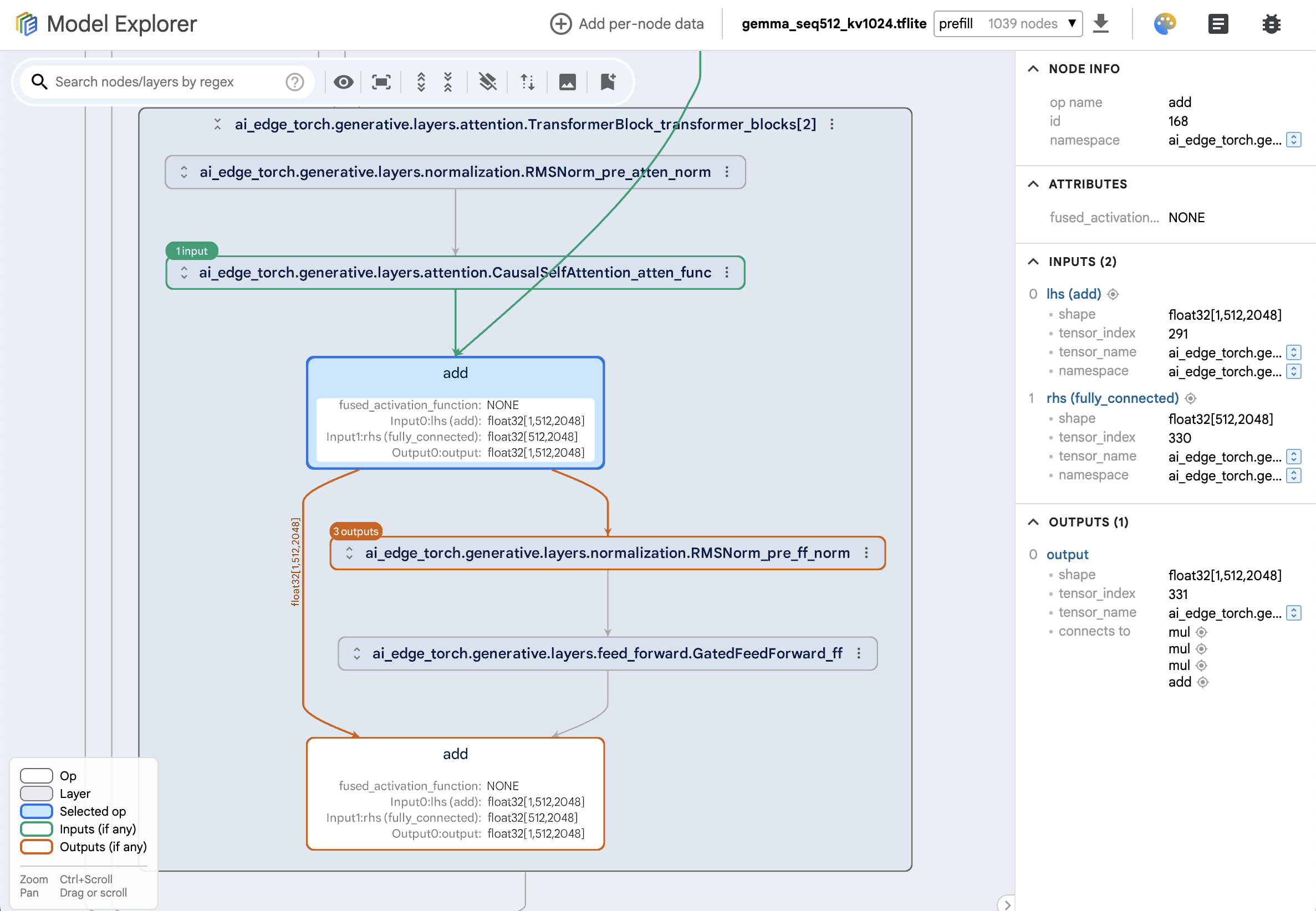
פיתוח מהיר יותר של קצה העורף
המגבלות של מכשירי הקצה מחייבות לעיתים קרובות לבצע שלבים נוספים כדי להמיר ולבצע אופטימיזציה של מודלים לפני שהם פועלים ביעילות, והתצוגה החזותית היא אחת מהדרכים היעילות ביותר להבין מודל ולזהות יעדים לאופטימיזציה.
| המרה | קידוד ברמת הבייט | אופטימיזציה |
|---|---|---|
| התכונה 'השוואה זה לצד זה' ב-Model Explorer מאפשרת לזהות בקלות בעיות שקשורות להמרות. אפשר לנווט בתרשים שכבה אחר שכבה, ולהרחיב ולכווץ קטעים כדי להציג פירוט נוסף. בודקים את המבנה הפנימי ואת החיבורים בתוך הגרפים ברמת הפירוט הנדרשת. | שימוש ב-Model Explorer כדי לזהות פעולות בעייתיות שמושפעות מהקידוד. אפשר למיין את הפעולות לפי מדדי שגיאות כדי לזהות ירידות באיכות, לקבל תובנות לגבי כל שכבה ולהשוות בין תוצאות קידוד שונות כדי למצוא את האיזון האידיאלי בין גודל המודל לאיכות שלו. | בעזרת Model Explorer תוכלו להבין טוב יותר את הפלט של כלי הבדיקות והניפוי הבאגים. לקבל תובנות לגבי הפעולות שאפשר להריץ ב-GPU, למיין פעולות לפי זמן אחזור ולהשוות את הביצועים של כל פעולה בין המאיצים השונים. |
תמיכה במודלים גדולים
Model Explorer תוכנן להפיק מודלים גדולים בצורה חלקה. אלפי צמתים? אין בעיה. מנוע הרינדור שמבוסס על GPU מסוגל להתאים את עצמו כדי ליצור רינדור חלק גם של מודלים גדולים מאוד. בנוסף, הגישה הייחודית של Model Explorer לכווץ שכבות כמו מערכת של קבצים ותיקיות מאפשרת לנווט מהר יותר ובקלות רבה יותר.
תכונות שיעזרו לכם לעבוד מהר יותר
| חיפוש | תצוגה מפוצלת | שכבות-על של נתונים |
|---|---|---|
| חיפוש יעיל שמבוסס על ביטוי רגולרי עוזר לאתר צמתים ספציפיים, לסנן אותם ולהדגיש אותם.
|
אפשר לטעון מודלים זה לצד זה באותה כרטיסייה כדי להשוות ביניהם בקלות.
|
אפשר לטעון נתונים מותאמים אישית ספציפיים לצמתים אל סייר המודלים כדי לזהות במהירות נקודות חמות ובעיות אחרות במודל.
|
| ייצוא לקובץ PNG | הוספת סימניות | גישה קלה למטא-נתונים |
| אפשר לייצא תמונה של התרשים בלחיצה על לחצן כדי לשתף אותה עם הצוות.
|
כדי לשמור את המיקום שלכם בתרשים, מוסיפים סימניות. כך תוכלו לעבור בקלות בין אזורים.
|
הצגת צורות של טינסורים, מעקב אחר קלט ופלט, הדגשת שכבות זהות, הצגת מספרי צמתים צאצאים ועוד.
|
שתי דרכים לשימוש בכלי 'ניתוח מודלים'
| הפעלה מקומית | הרצה ב-notebook של Colab |
|---|---|
| פועלים לפי הוראות ההתקנה הקלות ב-GitHub כדי להגדיר את Model Explorer במחשב המקומי. הוא פועל בחלון דפדפן וכל הנתונים נשארים מקומיים. תמיכה ב-Linux, ב-Mac וב-Windows. | Model Explorer פועל היטב ב-Colab, כך שתוכלו לשלב אותו בתהליך העבודה הקיים שלכם לפיתוח מודלים. אתם יכולים לנסות את הדף המודגים או לפעול לפי הוראות ההתקנה כדי להוסיף אותו למסמך משלכם. |


